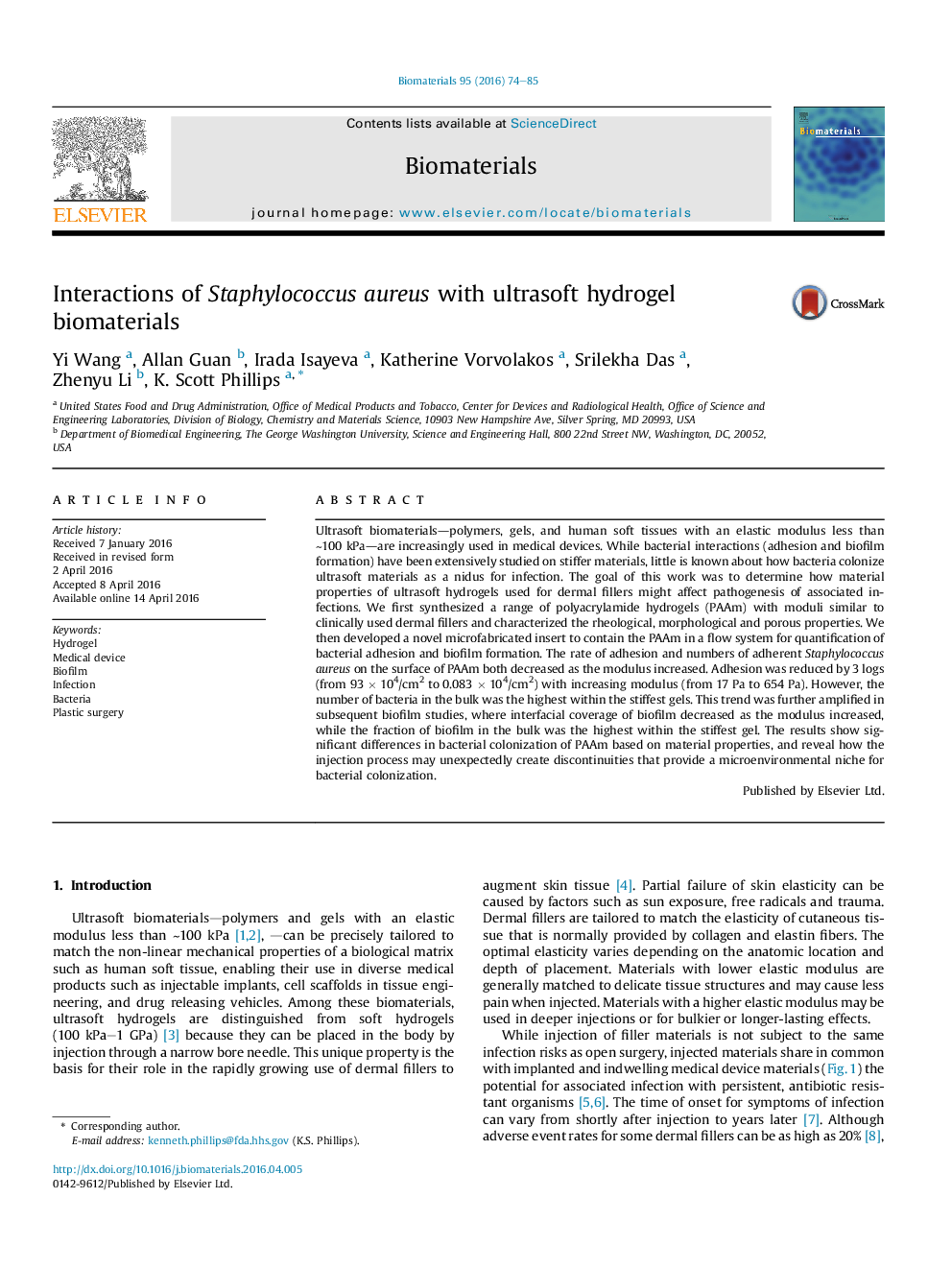| Article ID | Journal | Published Year | Pages | File Type |
|---|---|---|---|---|
| 6484973 | Biomaterials | 2016 | 12 Pages |
Abstract
Ultrasoft biomaterials-polymers, gels, and human soft tissues with an elastic modulus less than â¼100Â kPa-are increasingly used in medical devices. While bacterial interactions (adhesion and biofilm formation) have been extensively studied on stiffer materials, little is known about how bacteria colonize ultrasoft materials as a nidus for infection. The goal of this work was to determine how material properties of ultrasoft hydrogels used for dermal fillers might affect pathogenesis of associated infections. We first synthesized a range of polyacrylamide hydrogels (PAAm) with moduli similar to clinically used dermal fillers and characterized the rheological, morphological and porous properties. We then developed a novel microfabricated insert to contain the PAAm in a flow system for quantification of bacterial adhesion and biofilm formation. The rate of adhesion and numbers of adherent Staphylococcus aureus on the surface of PAAm both decreased as the modulus increased. Adhesion was reduced by 3 logs (from 93Â ÃÂ 104/cm2 to 0.083Â ÃÂ 104/cm2) with increasing modulus (from 17Â Pa to 654Â Pa). However, the number of bacteria in the bulk was the highest within the stiffest gels. This trend was further amplified in subsequent biofilm studies, where interfacial coverage of biofilm decreased as the modulus increased, while the fraction of biofilm in the bulk was the highest within the stiffest gel. The results show significant differences in bacterial colonization of PAAm based on material properties, and reveal how the injection process may unexpectedly create discontinuities that provide a microenvironmental niche for bacterial colonization.
Related Topics
Physical Sciences and Engineering
Chemical Engineering
Bioengineering
Authors
Yi Wang, Allan Guan, Irada Isayeva, Katherine Vorvolakos, Srilekha Das, Zhenyu Li, K. Scott Phillips,
